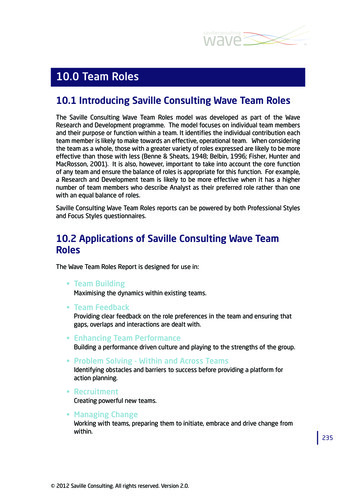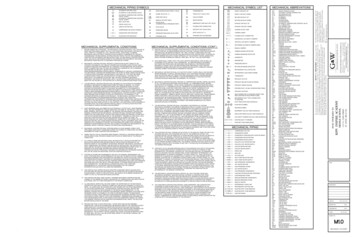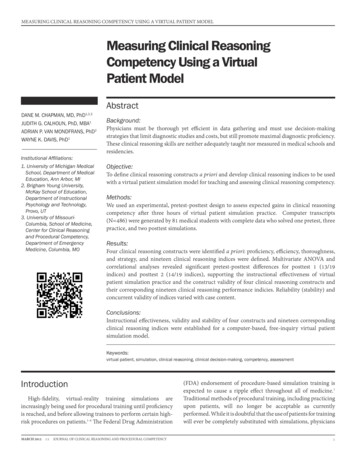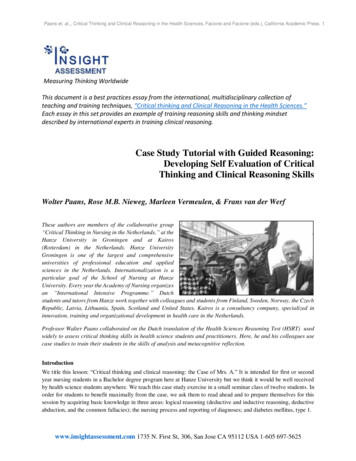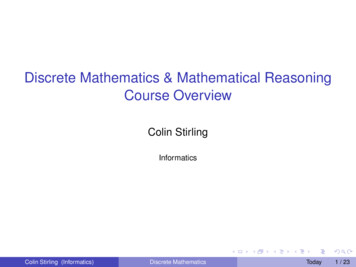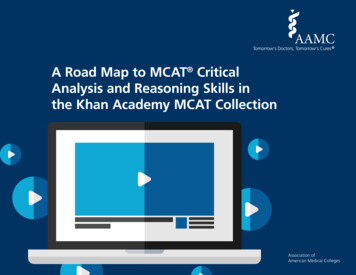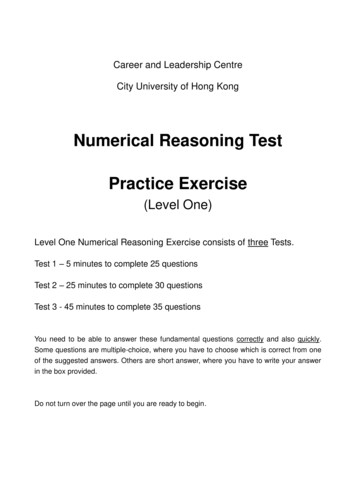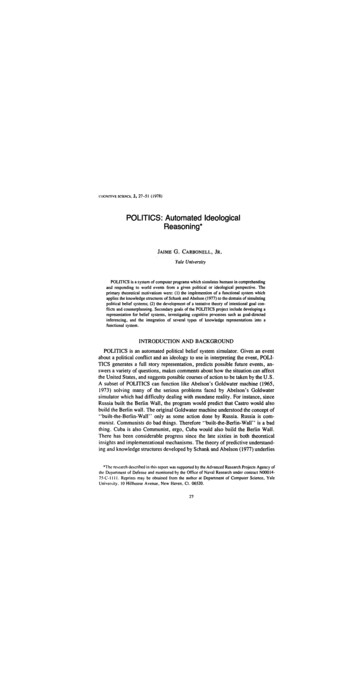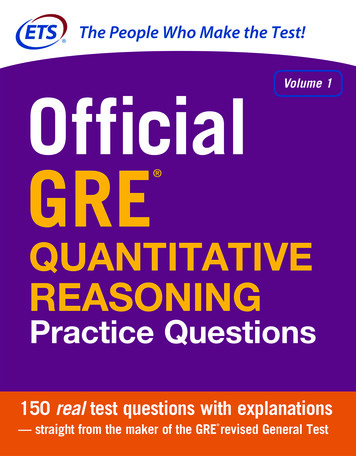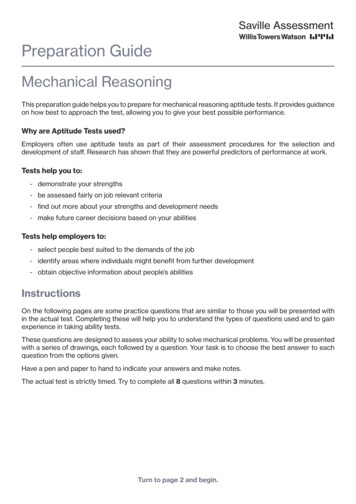
Transcription
Preparation GuideMechanical ReasoningThis preparation guide helps you to prepare for mechanical reasoning aptitude tests. It provides guidanceon how best to approach the test, allowing you to give your best possible performance.Why are Aptitude Tests used?Employers often use aptitude tests as part of their assessment procedures for the selection anddevelopment of staff. Research has shown that they are powerful predictors of performance at work.Tests help you to:- demonstrate your strengths- be assessed fairly on job relevant criteria- find out more about your strengths and development needs- make future career decisions based on your abilitiesTests help employers to:- select people best suited to the demands of the job- identify areas where individuals might benefit from further development- obtain objective information about people’s abilitiesInstructionsOn the following pages are some practice questions that are similar to those you will be presented within the actual test. Completing these will help you to understand the types of questions used and to gainexperience in taking ability tests.These questions are designed to assess your ability to solve mechanical problems. You will be presentedwith a series of drawings, each followed by a question. Your task is to choose the best answer to eachquestion from the options given.Have a pen and paper to hand to indicate your answers and make notes.The actual test is strictly timed. Try to complete all 8 questions within 3 minutes.Turn to page 2 and begin.
Practice Questions 1-221ABAs the handle is pulled, in which direction will the end of the bar move?A Direction AB Direction BC Neither Direction255AWhich handle requires less force to lift?A Handle AB Handle BC Both handles require equal forceAnswer Section Page 2A1BCA2BCB
Practice Questions 3-433ABIn which direction will the gear turn?A Direction AB Direction BC Neither Direction4ABIn which direction will the arm swing when the handle is moved as shown?A Direction AB Direction BC Neither DirectionAnswer Section Page 3A3BCA4BC
Practice Questions 5-65If the pulley wheel on the right turns, which other wheel will turn in the samedirection?A Pulley wheel AB Pulley wheel BC Neither pulley wheel A nor B6If the upper gear moves in the direction shown, in which direction will the lowergear turn?A Direction AB Direction BC Neither directionAnswer Section Page 4A5BCA6BC4
Practice Questions 7-87Which beam is more likely to beak?A Beam AB Beam BC Both beams are equally likely to break8If the wheel turns in the direction shown, in which direction will the ball move?A UpB DownC It will stay levelAnswer Section Page 5A7BCA8BC5
Your Test6Try to answer any questions you did not reach in the time limit before checking your answers.Checking your AnswersCheck your answers against the correct answers at the bottom of this page. Look at any questions yougot wrong and try to understand how to arrive at the correct answer. Keep in mind that most aptitudetests are designed to increase in difficulty and that people typically do not complete all the questionswithin the time limit. If you took much longer than 3 minutes to answer the questions, try to speed up yourwork rate. If you finished all of the questions within the time limit but made many mistakes, try focusingon the accuracy of your responses.Improving your Mechanical AbilitiesSome tips for improving mechanical abilities are provided below: Work with tools, equipment and machinery. Maintain, fix and repair things. Build objects with moving parts. Learn about mechanical principles. Look at technical user manuals.Before the Session Follow the suggestions given in this preparation guide. Get a good night’s sleep before the test session. Make sure you are wearing or bring with you glasses, contact lenses, hearing aids or anything elseyou may require for the session. If you have any special requirements, such as larger print versions of the test, specific lighting orseating needs, it is important that you make these known as soon as possible prior to the sessionto allow for appropriate accommodations to be made.During the Test Try to stay calm; using the practice tips provided should help you feel more at ease. Follow the instructions carefully, and ask questions if you are not sure of anything before the teststarts. Read each question carefully. Work as fast as you can. Do not spend too much time on any one question. If you find a question too difficult or are unsure of an answer indicate your best choice and move onquickly. After completing a test always seek feedback. It is much easier to improve your abilities if you knowhow well you have done.Good luck in your test session. We wish you every success in your career.Answer Section Page 2-3 Correct AnswersABC1ABC2ABCABCABC43Answer Section Page 4-5 Correct AnswersA5BCABC6TECH-AP-PG-MRS1-INTE 2017 Willis Towers Watson. All rights reserved.The reproduction of any part of this document by any meansor method, manual or electronic, is breaking the copyright ssment.com
Mechanical Reasoning This preparation guide helps you to prepare for mechanical reasoning aptitude tests. It provides guidance on how best to approach the test, allowing you to give your best possible performance. Why are Aptitude Tests used? Employers often use aptitude tests as part of their assessment procedures for the selection and development of staff. Research has shown that they are .
